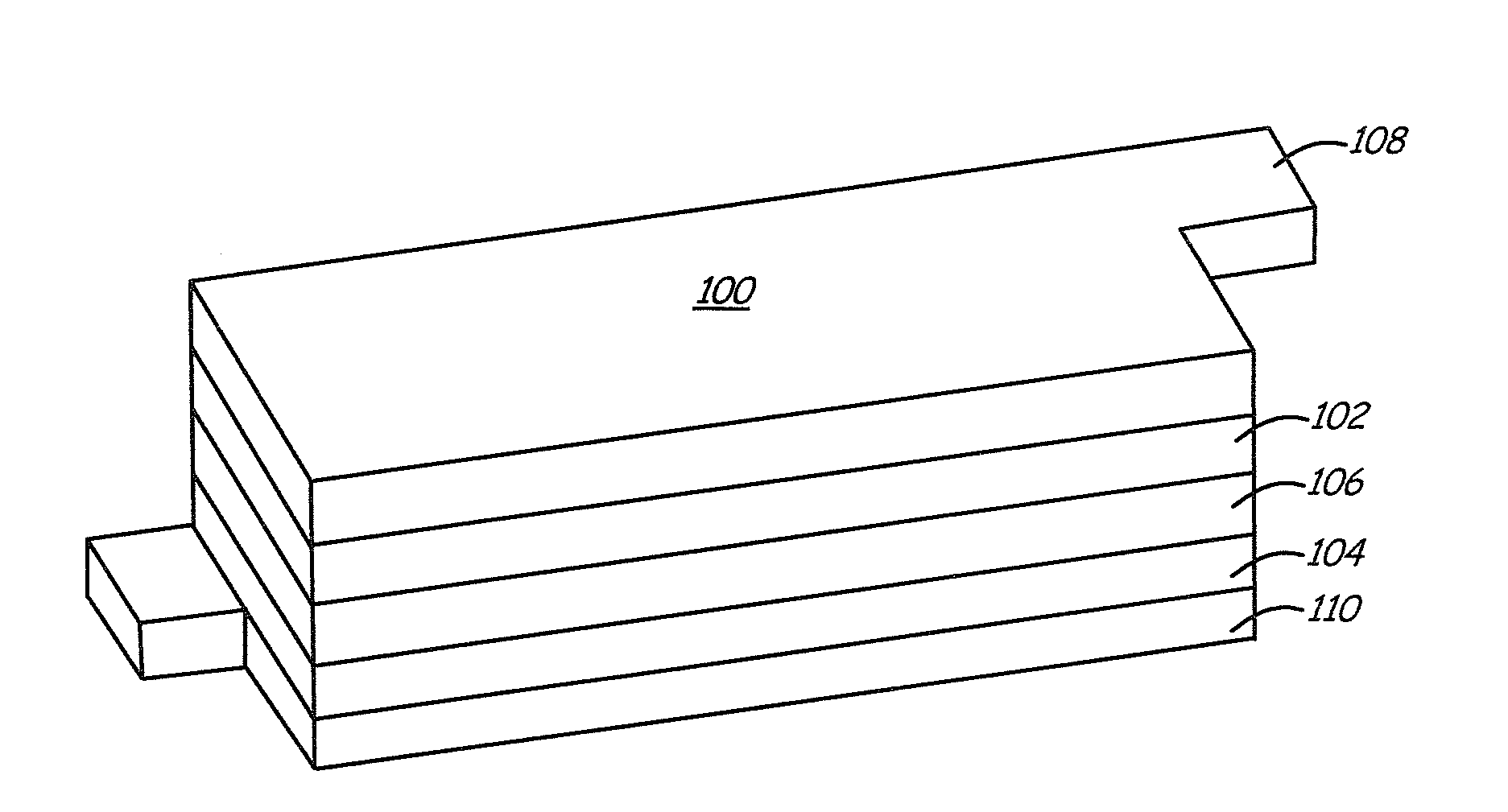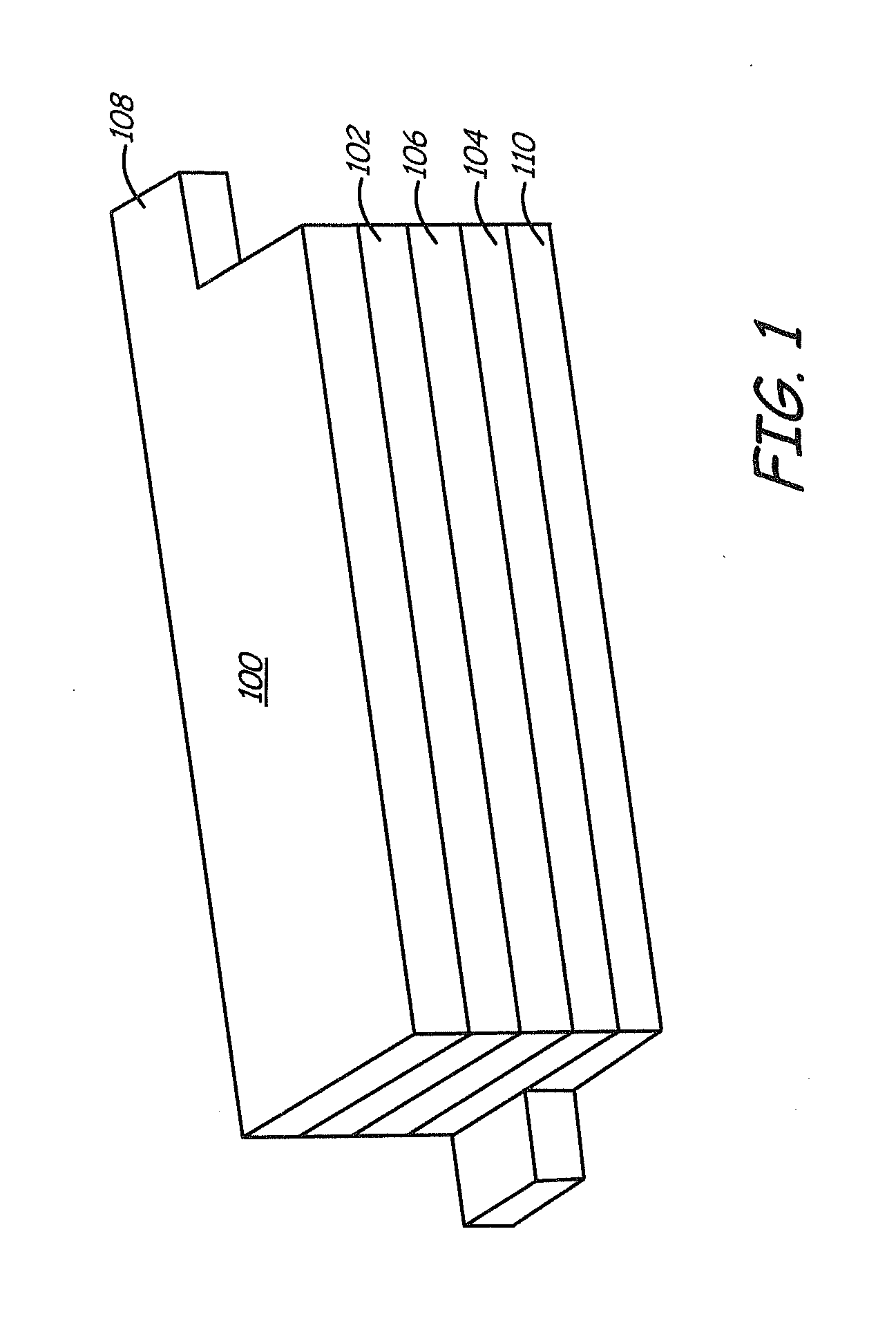Lithium ion batteries with long cycling performance
a technology of lithium ion batteries and cycling performance, applied in the field of lithium secondary batteries, can solve the problems of low energy density of battery cells, no significant improvement in energy density,
- Summary
- Abstract
- Description
- Claims
- Application Information
AI Technical Summary
Benefits of technology
Problems solved by technology
Method used
Image
Examples
examples 1-3
Synthesis and Preliminary Testing of Positive Electrode Materials
[0094]The coin cell batteries tested in Examples 1-3 were all performed using coin cell batteries produced following a procedure outlined here. The lithium metal oxide (LMO) powders were mixed thoroughly with acetylene black (Super P™ from Timcal, Ltd, Switzerland) and graphite (KS 6™ from Timcal, Ltd) to form a homogeneous powder mixture. Separately, Polyvinylidene fluoride (PVDF) (KF1300™ from Kureha Corp., Japan) was mixed with N-methyl-pyrrolidone (NMP) (Honeywell-Riedel-de-Haen) and stirred overnight to form a PVDF-NMP solution. The homogeneous powder mixture was then added to the PVDF-NMP solution and mixed for about 2 hours to form homogeneous slurry. The slurry was applied onto an aluminum foil current collector to form a thin wet film using a doctor's blade coating process.
[0095]A positive electrode structure was formed by drying the aluminum foil current collector with the thin wet film in vacuum oven at 110°...
example 1
Reaction of Metal Acetate with LiOH to form Li[Li0.07Ni0.31CO0.31Mn0.31]O2
[0097]This example demonstrates the formation of an active positive electrode material using a hydroxide co-precipitation process.
[0098]Stoichiometric amounts of nickel acetate (Ni(CH3COO)2.xH2O), cobalt acetate Co(CH3COO)2.xH2O) and manganese acetate (Mn(CH3COO)2.xH2O) were dissolved in distilled water to form a metal acetate solution. Separately an aqueous solution of LiOH was prepared. The two solutions were gradually added to a reaction vessel to form a metal hydroxide precipitate. The reaction mixture was stirred while the temperature of the reaction mixture was kept between room temperature and 80° C. The pH of the reaction mixture was about 10-12. In general, the aqueous metal sulfate solution had a concentration of 1 M to 3M, and the aqueous LiOH solution had a concentration of 1 M to 4M. The metal hydroxide precipitate was filtered, washed multiple times with distilled water, and dried at 110° C. for...
example 2
Reaction of Metal Sulfate with NaOH / NH4OH to form Li[Li0.07Ni0.31CO0.31Mn0.31]O2
[0101]This example demonstrates a co-precipitation process based on metal sulfate starting materials with base provided as a mixture of sodium hydroxide and ammonium hydroxide.
[0102]The processing in this example through the formation of the dried precipitate was performed in an oxygen free atmosphere. Stoichiometric amounts of metal sulfates (NiSO4.xH2O, CoSO4.xH2O, MnSO4.xH2O) were dissolved in distilled water to form a metal sulfate aqueous solution. Separately an aqueous solution with a mixture of NaOH and NH4OH was prepared. The two solutions were gradually added to a reaction vessel to form a metal hydroxide precipitate. During the precipitation step, the reaction mixture was stirred while the temperature of the reaction mixture was kept between room temperature and 80° C. The pH of the reaction mixture was about 10-12. The aqueous metal sulfate solution had a concentration from 1 M to 3M, while t...
PUM
| Property | Measurement | Unit |
|---|---|---|
| temperature discharge specific energy | aaaaa | aaaaa |
| temperature discharge specific energy | aaaaa | aaaaa |
| temperature energy density | aaaaa | aaaaa |
Abstract
Description
Claims
Application Information
 Login to View More
Login to View More - R&D
- Intellectual Property
- Life Sciences
- Materials
- Tech Scout
- Unparalleled Data Quality
- Higher Quality Content
- 60% Fewer Hallucinations
Browse by: Latest US Patents, China's latest patents, Technical Efficacy Thesaurus, Application Domain, Technology Topic, Popular Technical Reports.
© 2025 PatSnap. All rights reserved.Legal|Privacy policy|Modern Slavery Act Transparency Statement|Sitemap|About US| Contact US: help@patsnap.com



